New York City, Holland and Belgium in the Springtime
April 19 - May 6, 2014
Part Four - River Cruise from Gouda to Rotterdam, The Netherlands
Page 10 - Gouda, Kinderdijk, Rotterdam
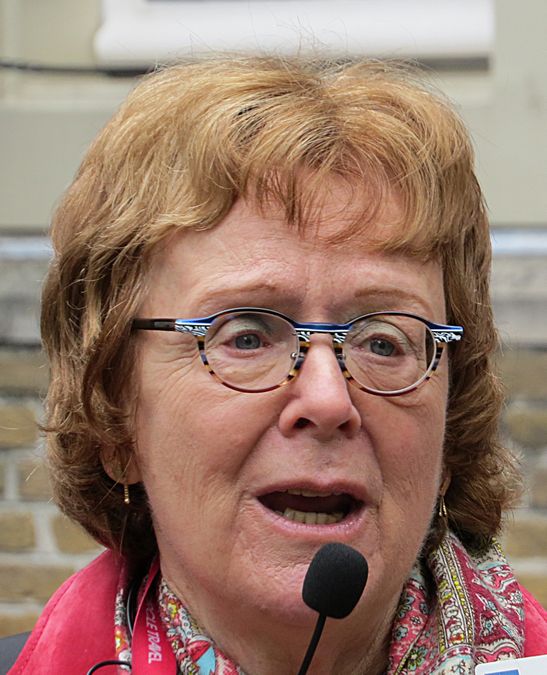
Our local guide in Gouda
Gouda, population about 71,000, is a city in the western Netherlands,
in the province of South Holland. Gouda, which was granted city
rights in 1272, is famous for its Gouda cheese, smoking pipes, and
15th-century city hall.
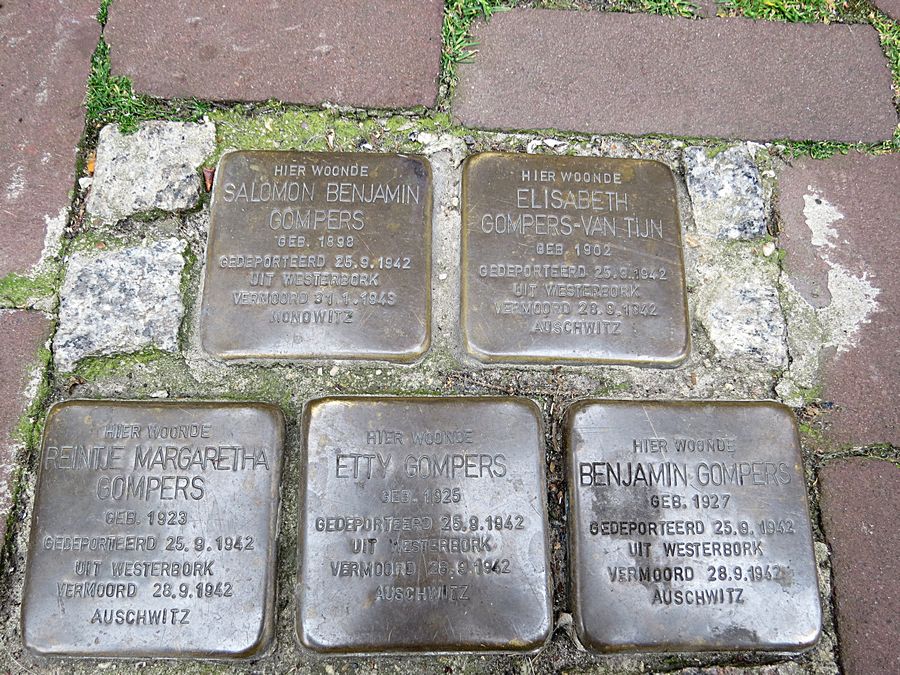
On the sidewalks in Gouda in front of their former homes
are plates with the names of Jewish residents of the city
that were taken to concentration camps by the Nazis
during WWII and died there.
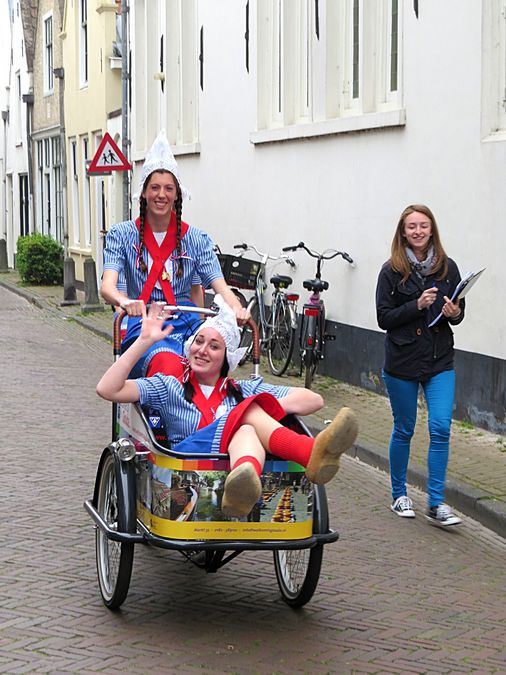
Young women on their way to work at the cheese market.
Gouda is world famous for its Gouda cheese, which is still traded on its
cheese market, held each Thursday. Gouda is also known for the
fabrication of candles, smoking pipes, and stroopwafels. Gouda used
to have a considerable linen industry and a number of beer breweries.
The world famous Gouda cheese is not made in the city itself but in
the surrounding region. It derives its name from being traded in Gouda
where the city council imposes stringent quality controls.
The economy of the city center is based on tourism, leisure and retail,
while offices are located at the outskirts of the city.
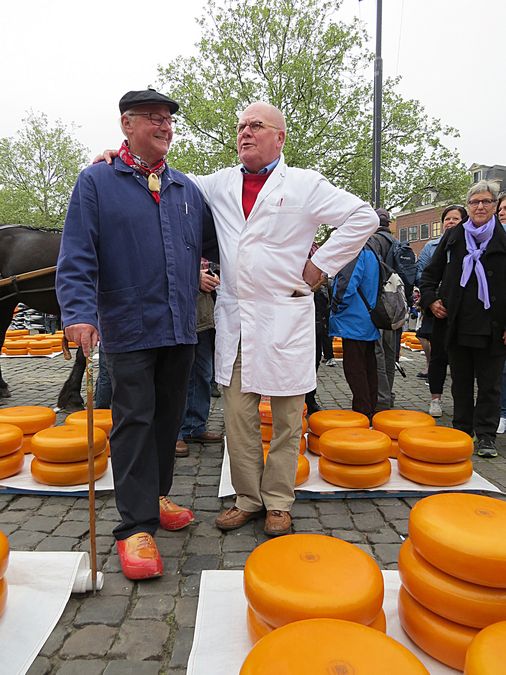
The cheese market in Gouda (pronunced gowda, not guda).
Cheese is traded much the same way in which it was done centuries
ago, on the market square between the 'Waag' (weigh house) and
the City Hall.

Young boy at the cheese market
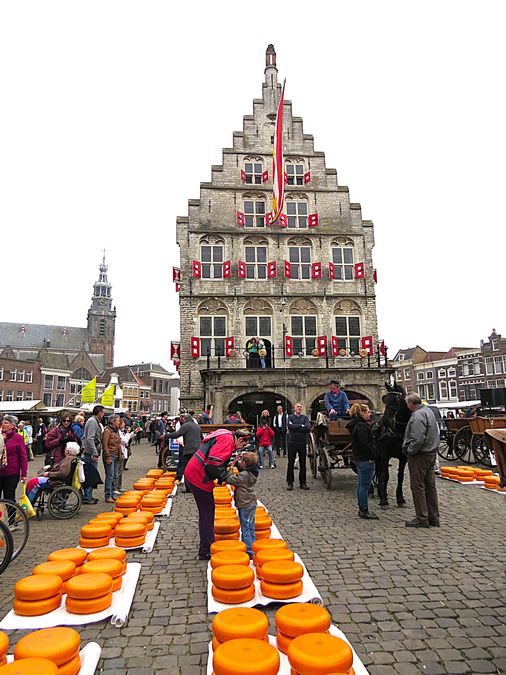
The 15th century town hall in Gouda
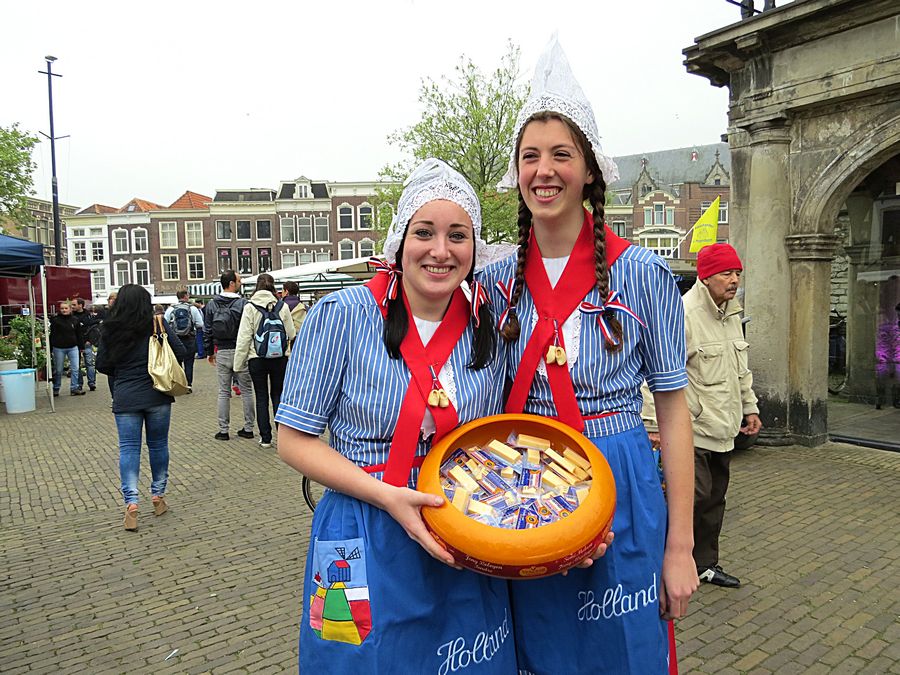
Young women that we had seen earlier on their way to
the cheese market. Here they are handing out samples.

We drove from Gouda to a nearby cheese farm.
This is a small pond at the farm.
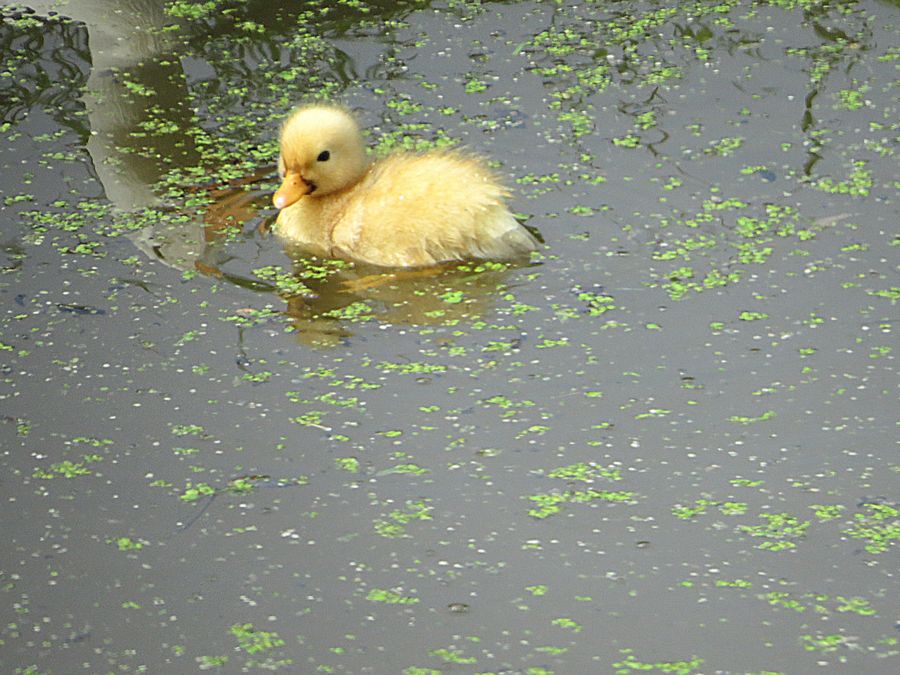
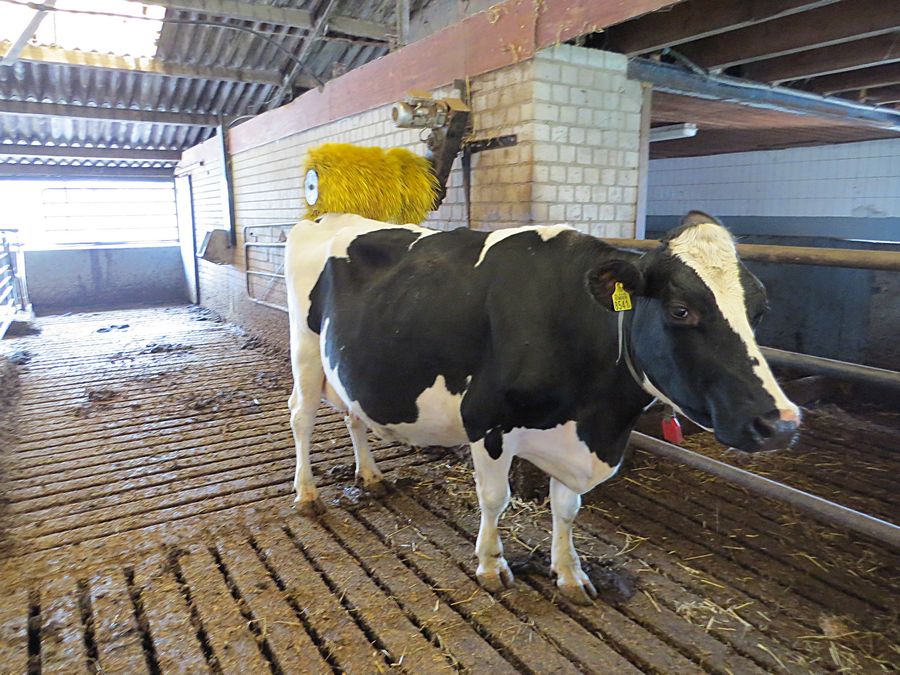
Cow getting a back rub at the cheese farm.
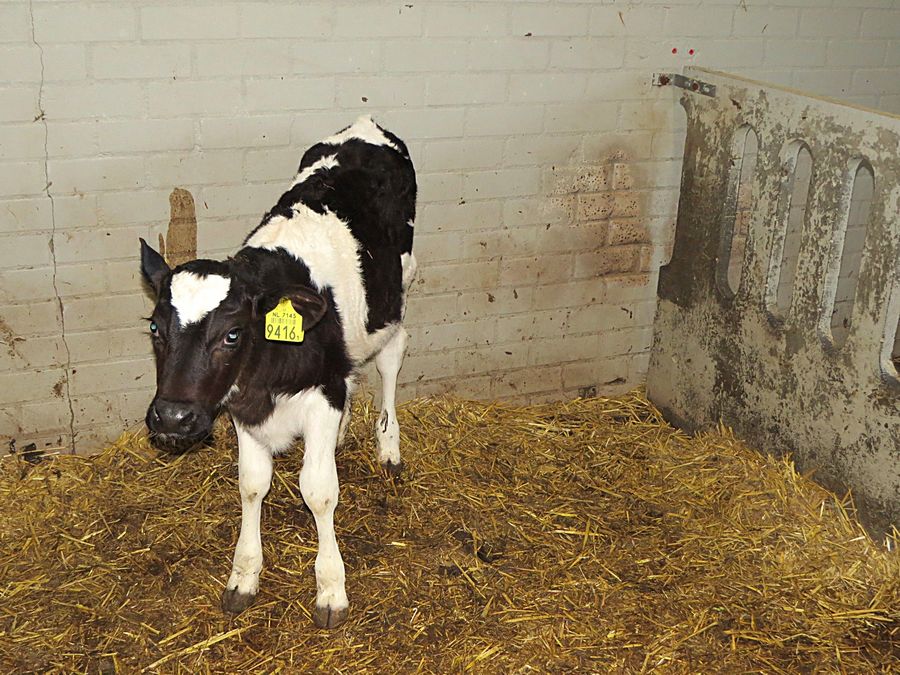
Calf at the cheese farm
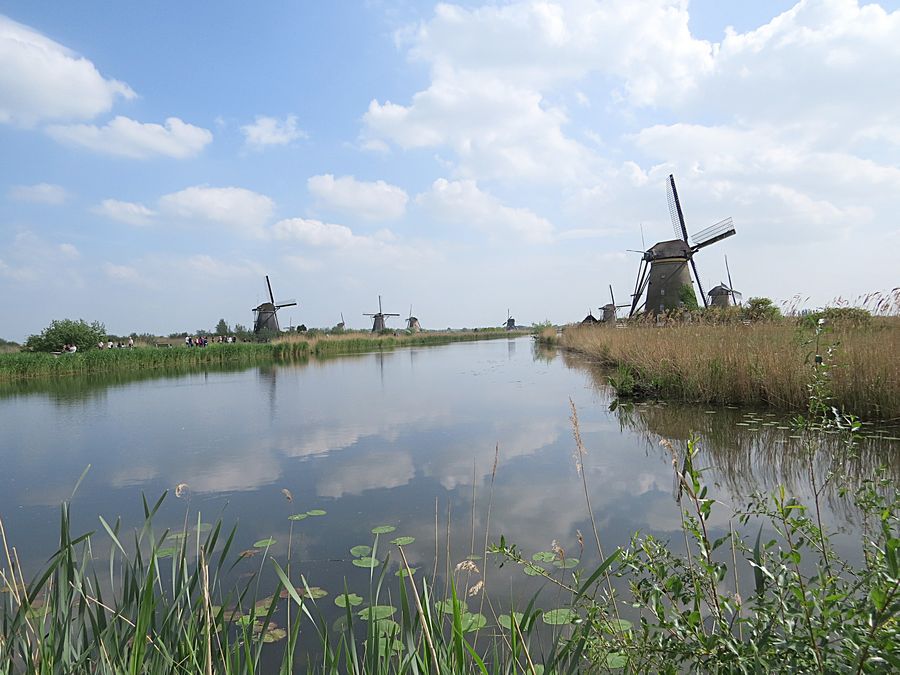
Kinderdijk - It takes its name from a 16th century legend
involving a baby, a cradle, and a cat that all survived
being tossed into raging waters. For centuries, the
Dutch were at the mercy of frequent floods. About 1740,
19 windmills were build in Kinderdijk. These structures
drained the excess water from polders, the reclaimed land
that is situated below sea level, and pumped it into nearby
rivers and canals. This helped to evenly distribute water levels
and lessen the threat of floods. Now, modern engines do the
job of turning the paddle wheels, but the country still has an
affection for its many windmills. The windmills are well preserved,
and the historic structures became protected by UNESCO in 1997.

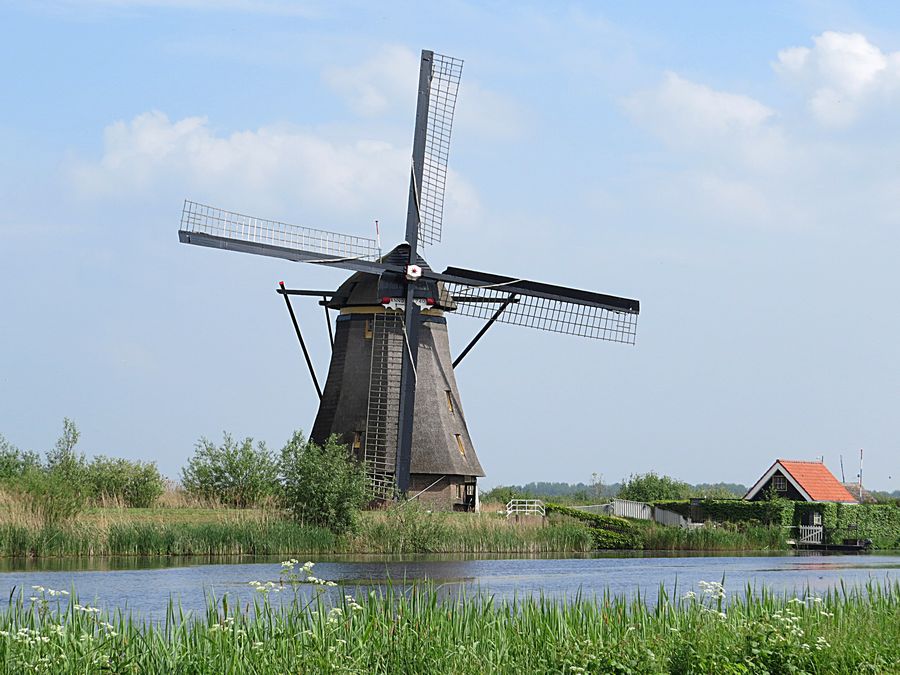

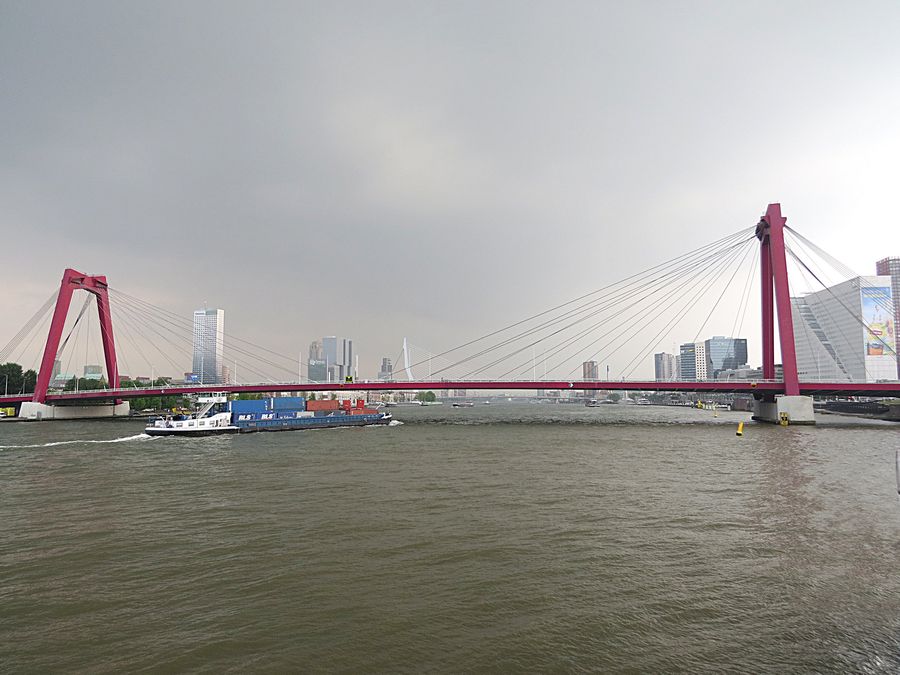
Arrival in Rotterdam
Rotterdam is the second-largest city in the Netherlands and one
of the largest ports in the world. Starting as a dam constructed in 1270
on the Rotte River, Rotterdam has grown into a major international
commercial center. Its strategic location at the Rhine-Meuse-Scheldt
delta on the North Sea and at the heart of a massive rail, road, air
and inland waterway distribution system extending throughout
Europe is the reason that Rotterdam is often called the
"Gateway to Europe."
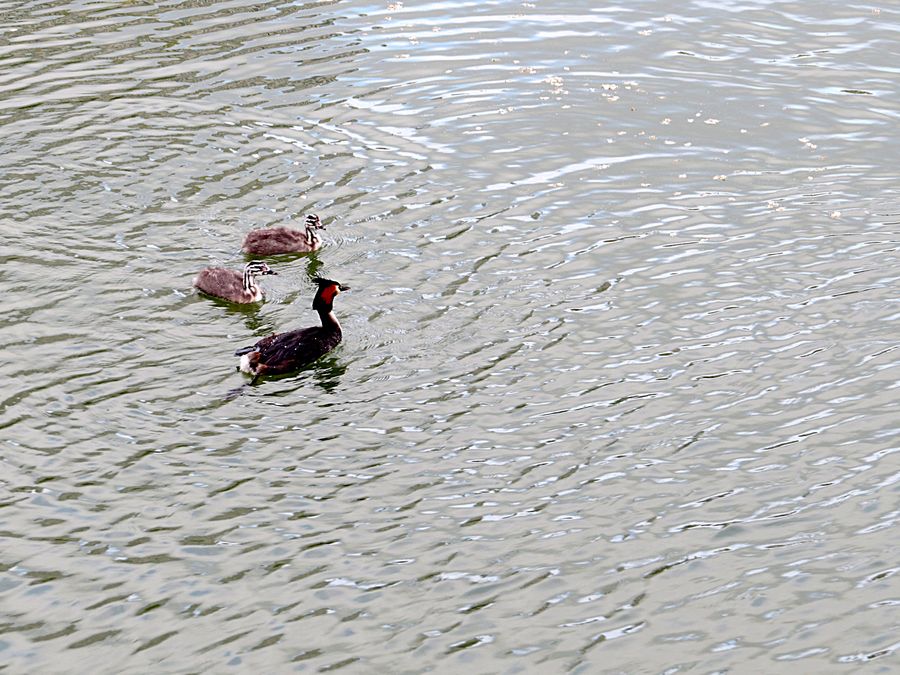
Great crested grebe and babies

Part of Rotterdam skyline
Here is the Witte Huis or White House, a National Heritage
Site in Rotterdam, built in 1898 in Art Nouveau style. The building
is 141 ft tall with 10 floors and was the tallest in Europe when it was
built. It was also the first high-rise building in Europe.
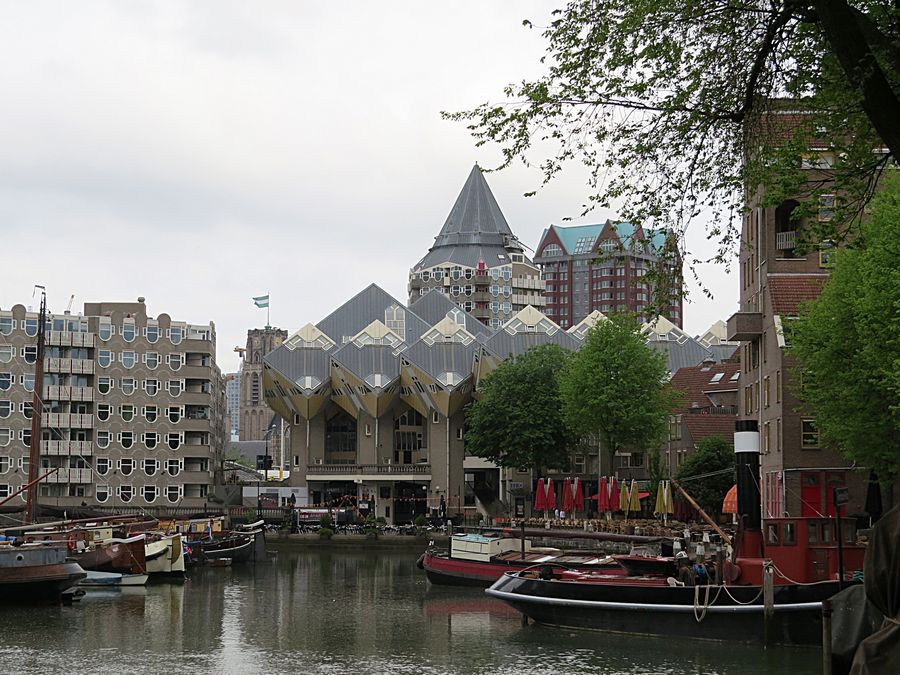
Cube houses (Dutch: Kubuswoningen) are a set of innovative houses
built in Rotterdam and Helmond in the Netherlands, designed by
architect Piet Blom and based on the concept of "living as an
urban roof": high density housing with sufficient space on the
ground level. Blom tilted the cube of a conventional house 45
degrees, and rested it upon a hexagon-shaped pylon. His design
represents a village within a city, where each house represents a tree,
and all the houses together, a forest.

Three test versions were first constructed in 1974, and in 1977, 18
houses were constructed in Helmond. The many houses required
for a woonwoud (English: living woods) were never realized.
The houses in Rotterdam were designed in 1977 in a plan of 55,
of which 39 were built.

Close-up view of cube homes

View from the cube homes
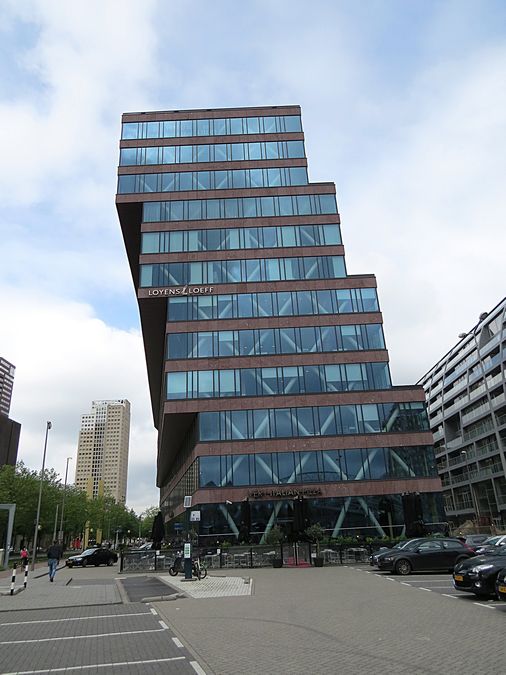
Rotterdam has some interesting architecture
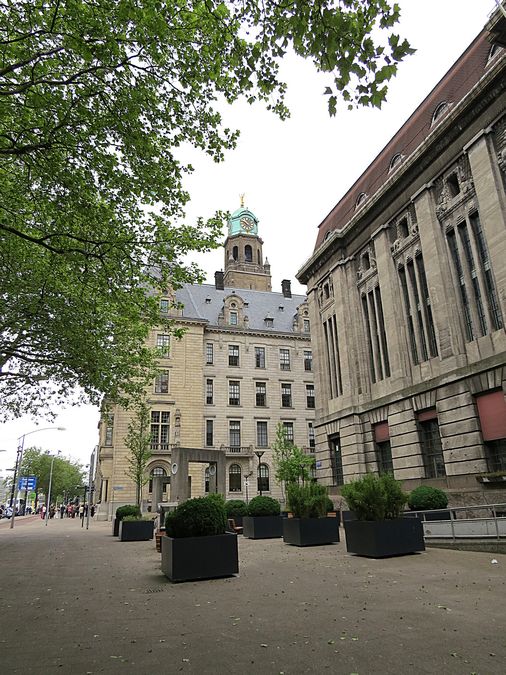
The City Hall of Rotterdam

In the Netherlands, people get married at City Hall.
Link Page 11 - Delft and Evening Cruise of Rotterdam Harbor
Pat's Home Page